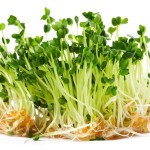
Traditional food preparation techniques do more than just preserve food. They remove natural toxins and increase nutrients, as well as the body’s ability to fully use them.
Here’s a list of time-honored food preparation and preservation techniques, some of which you can try at home:

1. Fermenting—Acetic acid, lactic acid, and alcohol act as natural preservatives. Improves digestibility because microbes have predigested. Can create new nutrients, especially B vitamins. Adds helpful bacteria.
2. Soaking—Improves digestibility. Reduces phytic acid, allowing absorption of more minerals, such as iron and calcium. Soaking grains breaks down phytic acid, a substance that prevents the absorption of minerals like calcium, magnesium, iron, and zinc. Also, as grains soak, vitamin content increases, especially B vitamins.
3. Sprouting—Deactivates enzyme inhibitors, making the sprouted seed more digestible.
4. Nixtamalization—Soaking corn with lime (calcium hydroxide) or wood ashes (potassium hydroxide) increases digestibility and bioavailability of niacin, protein, and calcium. Decreases phytic acid and harmful mycotoxins.
5. Pounding—Removes the bran or hull of a seed or grain, which contain most of the antinutrients. Increases digestibility.
6. Drying—Removes moisture, slowing bacterial growth.
7. Salt curing—Draws water out of cells, killing microorganisms and preventing spoilage. Salt denatures meat proteins and produces glutamate, which enhances flavor.
8. Smoking—Dries meat and adds phenolic compounds that bind to the surface of the food and act as antioxidants, preventing rancidity.
Visit EcoWatch’s FOOD page for more related news on this topic.


Leave a Reply
You must be logged in to post a comment.